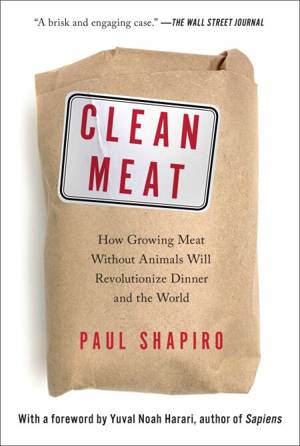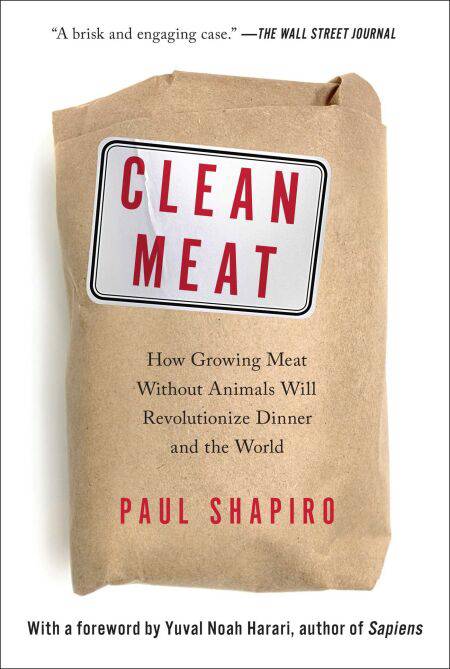
- Afhalen na 1 uur in een winkel met voorraad
- Gratis thuislevering in België vanaf € 30
- Ruim aanbod met 7 miljoen producten
- Afhalen na 1 uur in een winkel met voorraad
- Gratis thuislevering in België vanaf € 30
- Ruim aanbod met 7 miljoen producten
Zoeken
Clean Meat E-BOOK
How Growing Meat Without Animals Will Revolutionize Dinner and the World
Paul Shapiro
E-book | Engels
€ 7,82
+ 7 punten
Uitvoering
Omschrijving
Paul Shapiro gives you a “captivating” (John Mackey, former CEO of Whole Foods Market) front-row seat for the race to create and commercialize cleaner, safer, sustainable meat—real meat—without the animals.
Since the dawn of Homo sapiens some quarter million years ago, animals have satiated our species’ desire for meat. But with a growing global population and demand for meat, eggs, dairy, leather, and more, raising such massive numbers of farm animals is woefully inefficient and takes an enormous toll on the planet, public health, and certainly the animals themselves.
But what if we could have our meat and eat it, too? The next great scientific revolution is underway—“a future where the cellular agricultural revolution helps lower rates of foodborne illness, greatly improves environmental sustainability, and allows us to continue to enjoy the food we love” (Kathleen Sebelius, former US Secretary of Health and Human Services).
Enter clean meat—real, actual meat grown (or brewed!) from animal cells—as well as other clean foods that ditch animal cells altogether and are simply built from the molecule up. Whereas our ancestors domesticated wild animals into livestock, today we’re beginning to domesticate their cells, leaving the animals out of the equation. From one single cell of a cow, you could feed an entire village. And “in this important book that could just save your life” (Michael Greger, MD, author of How Not to Die), the story of this coming second domestication is anything but tame.
Since the dawn of Homo sapiens some quarter million years ago, animals have satiated our species’ desire for meat. But with a growing global population and demand for meat, eggs, dairy, leather, and more, raising such massive numbers of farm animals is woefully inefficient and takes an enormous toll on the planet, public health, and certainly the animals themselves.
But what if we could have our meat and eat it, too? The next great scientific revolution is underway—“a future where the cellular agricultural revolution helps lower rates of foodborne illness, greatly improves environmental sustainability, and allows us to continue to enjoy the food we love” (Kathleen Sebelius, former US Secretary of Health and Human Services).
Enter clean meat—real, actual meat grown (or brewed!) from animal cells—as well as other clean foods that ditch animal cells altogether and are simply built from the molecule up. Whereas our ancestors domesticated wild animals into livestock, today we’re beginning to domesticate their cells, leaving the animals out of the equation. From one single cell of a cow, you could feed an entire village. And “in this important book that could just save your life” (Michael Greger, MD, author of How Not to Die), the story of this coming second domestication is anything but tame.
Specificaties
Betrokkenen
- Auteur(s):
- Uitgeverij:
Inhoud
- Aantal bladzijden:
- 256
- Taal:
- Engels
Eigenschappen
- Productcode (EAN):
- 9781501189104
- Verschijningsdatum:
- 1/01/2018
- Uitvoering:
- E-book
- Beveiligd met:
- Adobe DRM
- Formaat:
- ePub

Alleen bij Standaard Boekhandel
+ 7 punten op je klantenkaart van Standaard Boekhandel
Beoordelingen
We publiceren alleen reviews die voldoen aan de voorwaarden voor reviews. Bekijk onze voorwaarden voor reviews.











